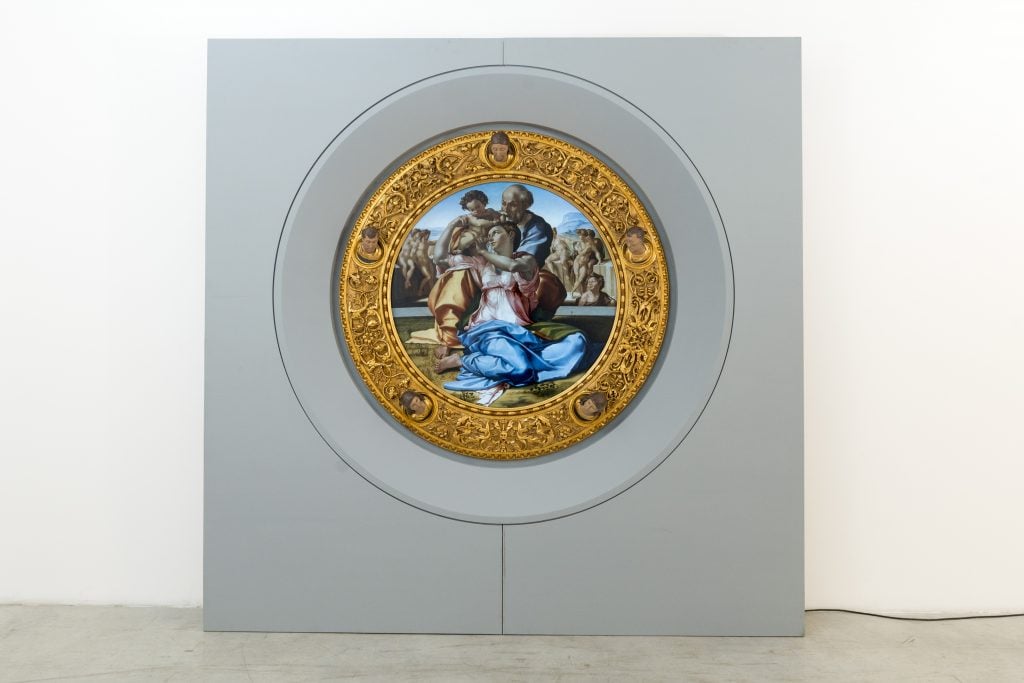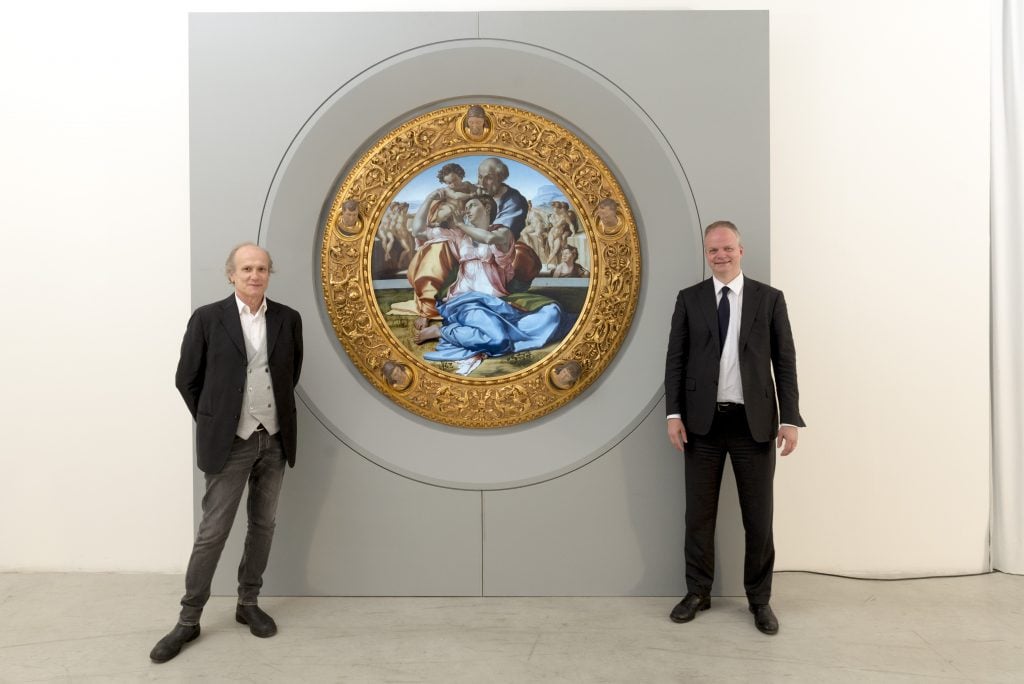Museums & Institutions
The Uffizi Gallery Just Sold a Michelangelo NFT for $170,000, and Now Is Quickly Minting More Masterpieces From Its Collection
The Florence museum has Botticelli and Titian NFTs in the works.

The Florence museum has Botticelli and Titian NFTs in the works.

Artnet News

The Uffizi Gallery in Florence is turning some of its most prized artworks into NFTs and selling them to raise funds after a cash-strapped year. And it’s starting off with a bang: an encrypted Michelangelo painting of the holy family, Doni Tondo (1505–06), just sold for €140,000 ($170,000).
The museum will split the proceeds with Cinello, an Italian company that has patented a new way to make digital facsimiles of famous paintings, as part of a new partnership announced today. Cinello’s digital artworks, which it calls DAWS, are produced in the dimensions of the original piece, and purport to be completely unique and theft proof. An NFT token is created on the blockchain for each DAW, certifying ownership.
Each piece produced for the Uffizi comes with a certificate of authenticity signed by Eike Schmidt, the museum’s director. As part of the agreement with Cinello, the museum banks 50 percent of the profits for each DAW made from a piece in its collection and sold by the company.

Cinello founder and CEO Franco Losi (L) and Uffizi director Eike Schmidt (R) with Michelangelo’s Doni Tondo (1505-06).
A spokesperson for the Uffizi declined to provide details about the Michelangelo sale or the museum’s deal with Cinello. The Italian newspaper Corriere della Sera reported that the buyer of the digital Michelangelo was a woman in Rome who purchased it for her husband, a prominent collector, for his 60th birthday.
For the Uffizi, which saw its annual visitor numbers fall from 4.4 million in 2019 to 1.2 million last year, according to the Art Newspaper, the side hustle might yield some extra cash at a crucial time.
“In the medium term [the NFT sales] will be able to contribute to the finances of a museum, comparable to the proceeds of the restaurant business,” Schmidt told Corriere della Sera. “It is not a change of direction in terms of revenue, it is an additional revenue. But creating such a market is not a quick thing.”
A dozen other major works from the Uffizi’s collection will also be turned into DAWs in the near future. Among those on the list are Botticelli’s The Birth of Venus, Raphael’s Madonna del Granduca, Caravaggio’s Bacchus, and Titian’s Venus of Urbino.